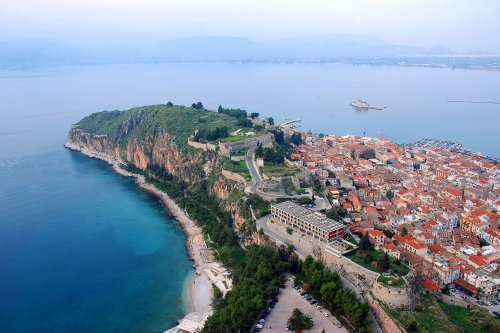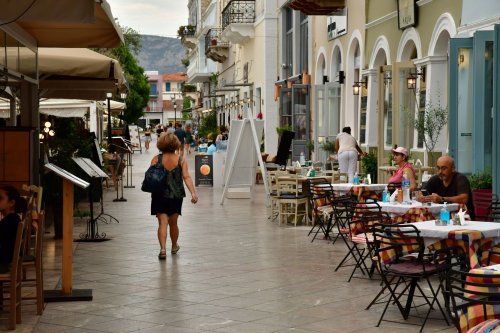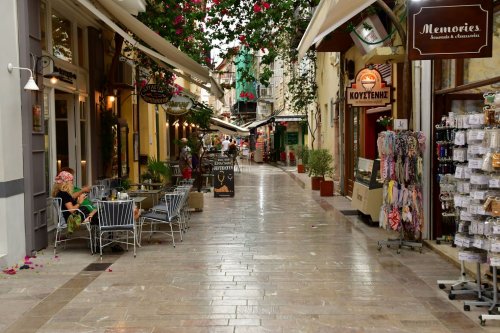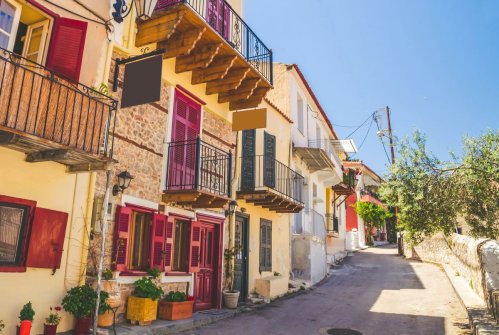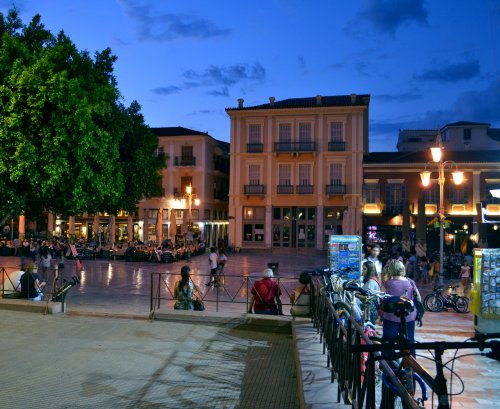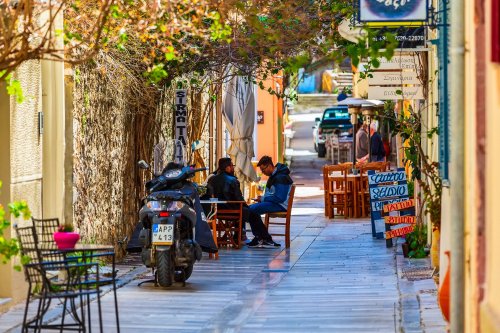3 wonderful routes for a walk in Nafplio
Follow us, on three routes through the old town
Whether you're coming for the first time or for the hundredth time, you think you know it like the back of your hand or you are just starting to discover it from the beginning, Nafplio hides, under the shadow of its three castles, hidden details and surprises you can't imagine.
Follow us, on three routes through the old town, the sun-kissed coast and through the secret neighborhood where few tourists have ever strayed. We promise to reveal all its secrets.
At least almost all of them - for half the joy of such a walk is to discover, alongside the grand sights, those little nooks and crannies that only you notice, the ones that become your own personal Nafplian secret.
Route #1: In the footsteps of history in the Old Town
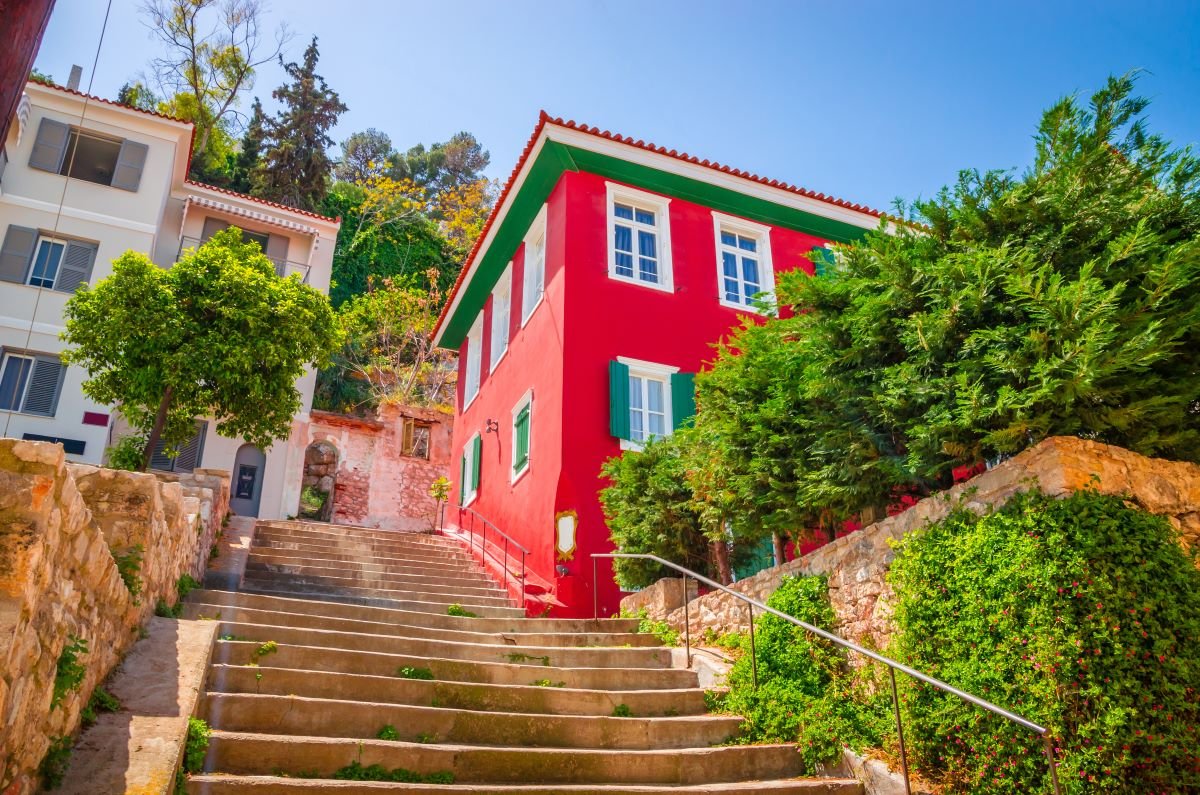
One of the most beautiful places in the entire Greece, the old town of Nafplio: with its pastel neoclassical buildings, its flowery balconies balanced on elaborate brackets catching your eye as you walk on the cobbled alleys and are completely free of vehicle noise.
Immersed in the history, dating back centuries to the legendary first capital of Greece, the old Nafplio has so much to tell you, and so much to show you, that every stroll seems different from the other.
We start from the Three Admirals Square
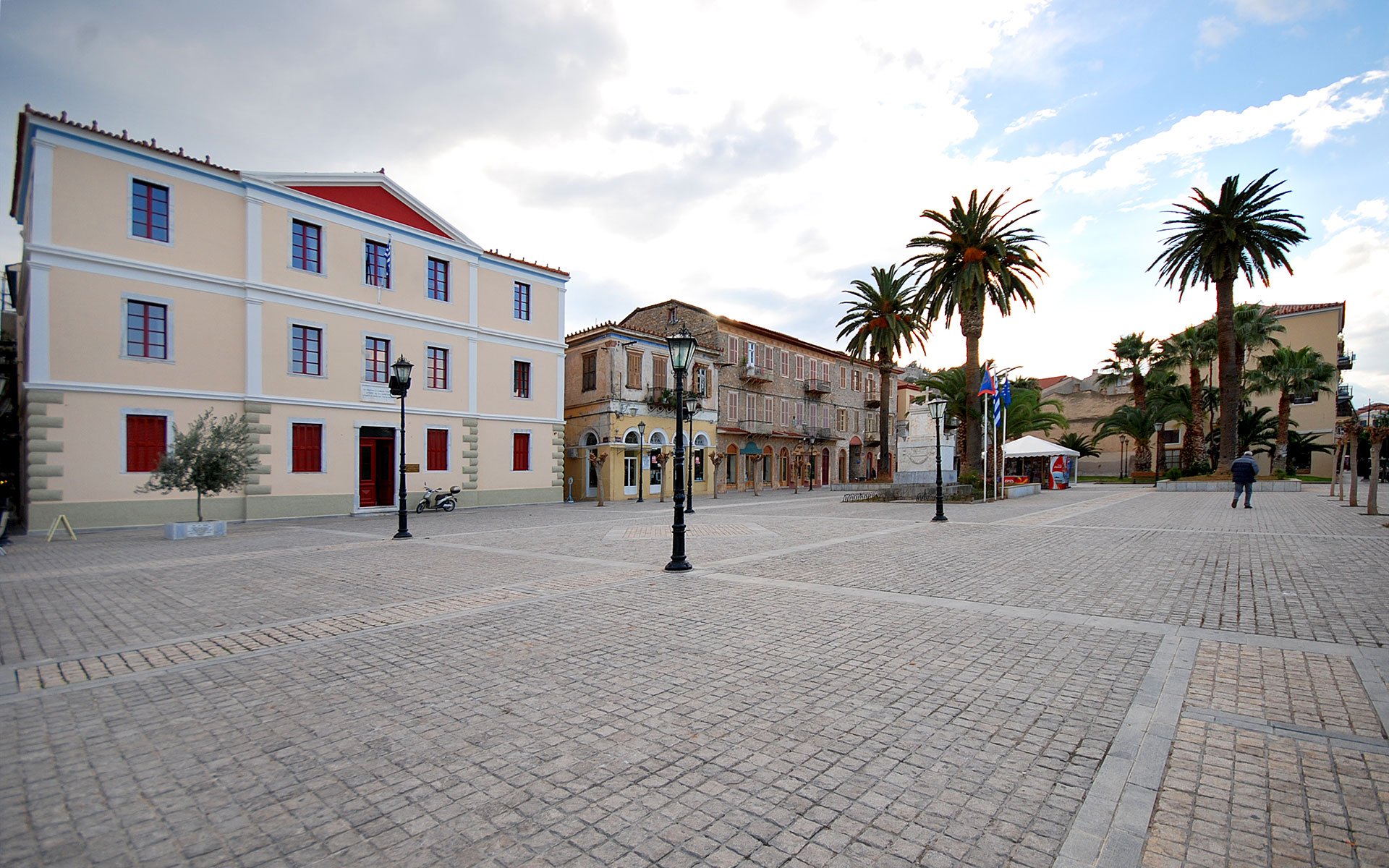
The gateway to the old town of Nafplio is the square with the palm trees, the Town Hall and the statue of Otto. This is where the first pharmacy of Greece was opened, and here was also the location of Kapodistrias' Government House, which was destroyed in the fire of 1929.
The admirals to whom its name pays tribute are Edward Codrington of Britain, Henri Derigny of France and Longinus Hayden of Russia who defeated the allied Turkish-Egyptian fleet at Pylos, thus sealing the happy ending for the Greek Revolution, which had begun six years earlier.
Two great museums that are worth seeing
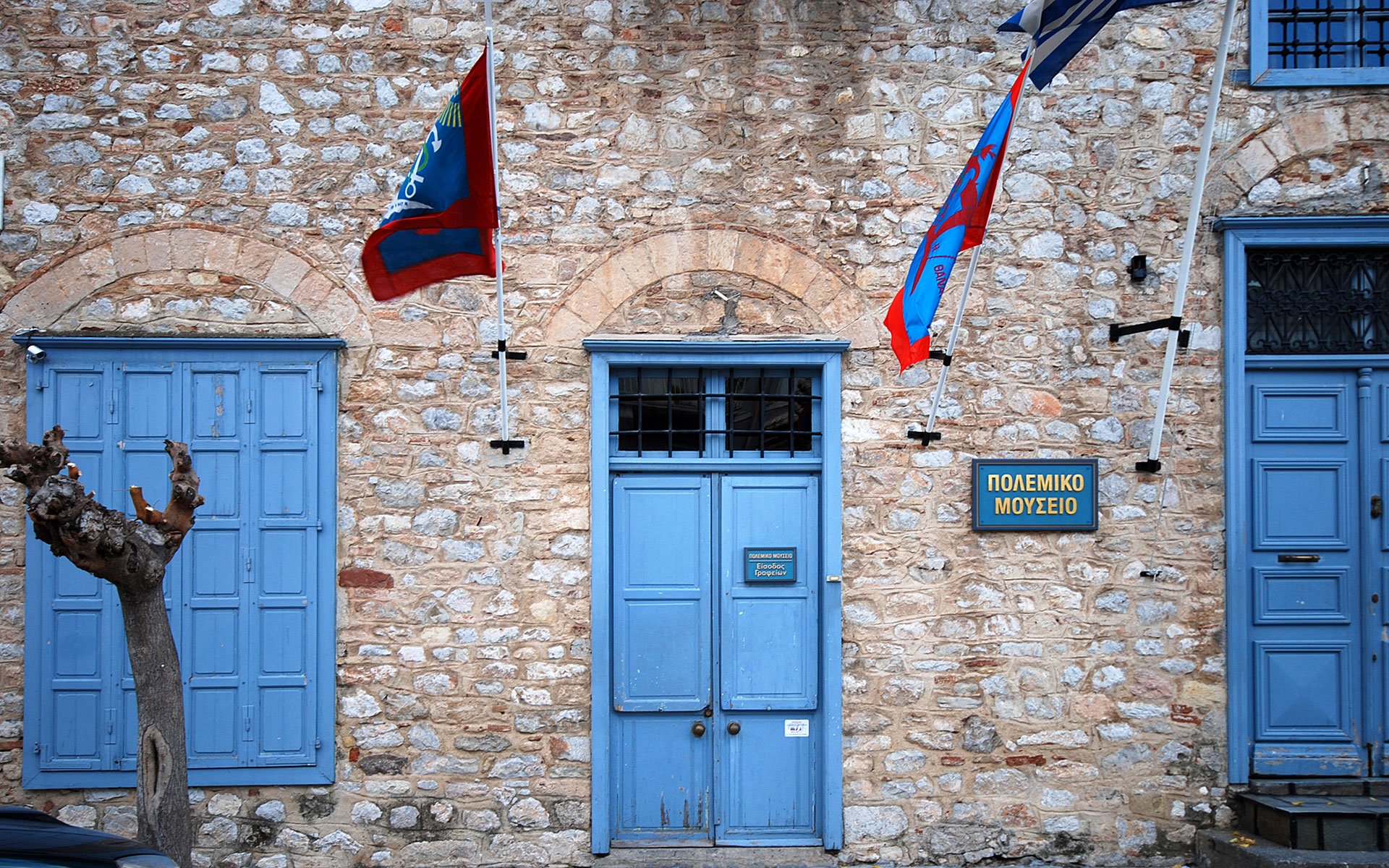
A few steps from the square, at 22nd Amalia Street, the iconic stone building with the blue windows houses the War Museum, which keeps relics, works of art and photographic archives that narrate the stories of World War II, the Balkan Wars and the Greek Revolution.

On the next corner, where Vassiliou Alexandrou Street meets Sofroni Street, the Basil Papantoniou Foundation, what the old-timers will introduce to you as the Peloponnesian Folklore Museum, will guide you through the everyday life of the last two centuries through works of folk art, embroideries, home utensils, rare costumes and –our personal favourite- nostalgic maps of Nafplio, as cartographers and travellers of past centuries with scarce means tried to capture it.
Your base in the old town of Nafplio
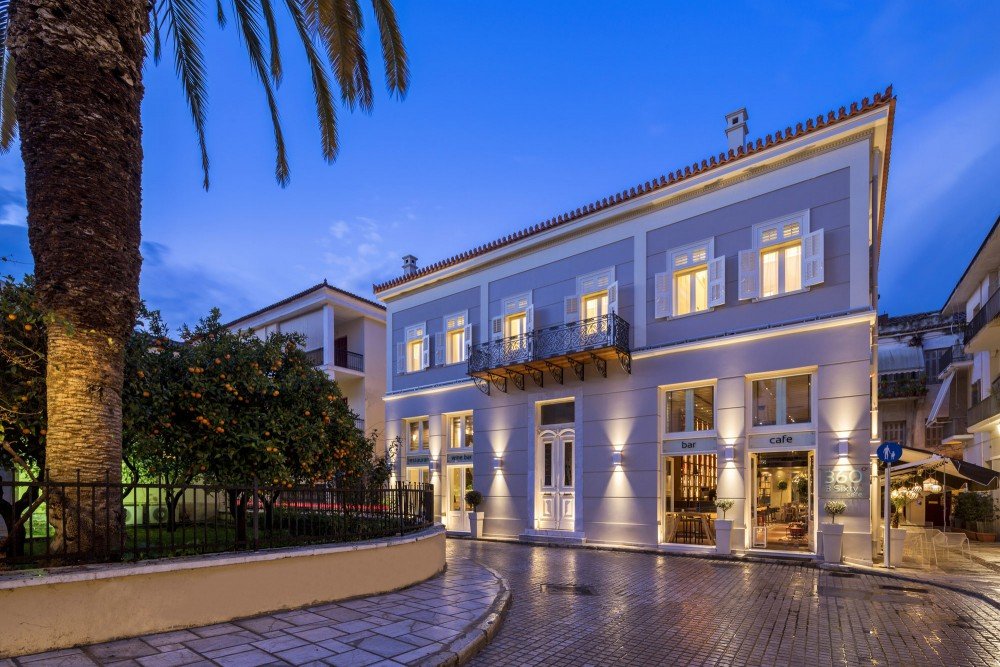
Perhaps the most impressive of the hotels in the old town, the iconic “3Sixty” of the Neoklasiki Group will accommodate you in unique rooms and suites of cinematic luxury, setting the scene for the perfect romantic getaway in Nafplio.
Housed in a magnificent neoclassical building of 1860, it overlooks the most beautiful view of the old town from the terrace, and serves in its restaurant fine cuts of meat from famous world-class farms.
In its wine bar you will find the most complete list of Peloponnesian wine with more than 50 labels for you to taste to your heart’s desire. So, we make a stop here for wine (or coffee from fine blends if it's still early) and continue on our trip later.
The Syntagma Square
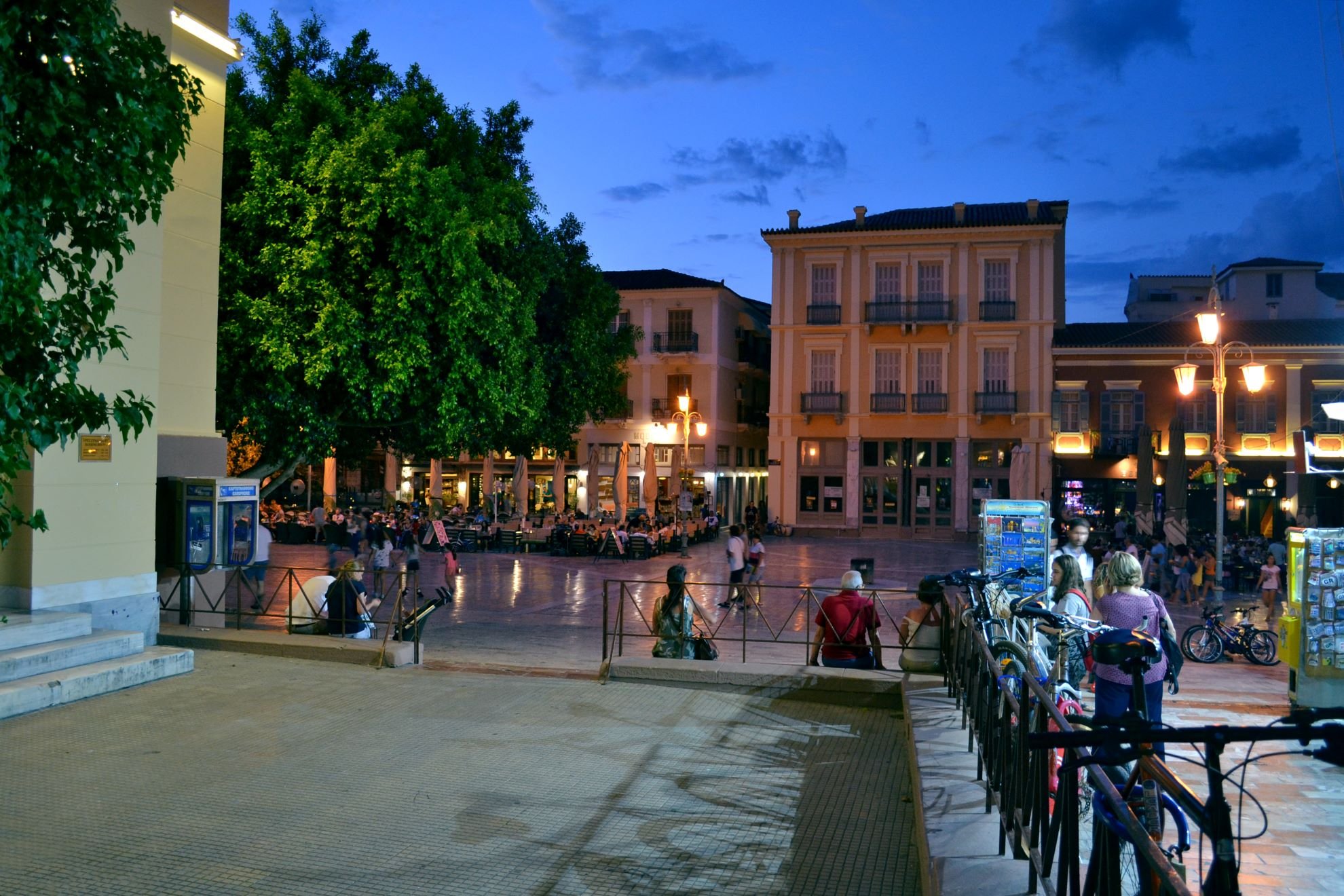
Ground zero of Nafplio, the landmark square of the old town, with its open space, has a story in every corner. First and foremost, the Archaeological Museum, housed in a Venetian building of 1713, which imposes its presence on the square, tells the story of thousands of years of Argolic history through its exhibits, the oldest of which dates back to 21,000 BCE (no, we haven't got the zeros wrong).
The “Vouleftikon” (Parliament building in Greek) around the corner, housed the first Parliament in an Ottoman mosque of the 1730s, when Nafplio became the capital of the newly established Greek state.
Turn around now and look behind you: You'll see the “Trianon”, the oldest mosque in the city, which dates back to the 16th century and now hosts theatrical performances, art exhibitions and other cultural events.
The Fisherman's neighborhood (Psaromachalas)
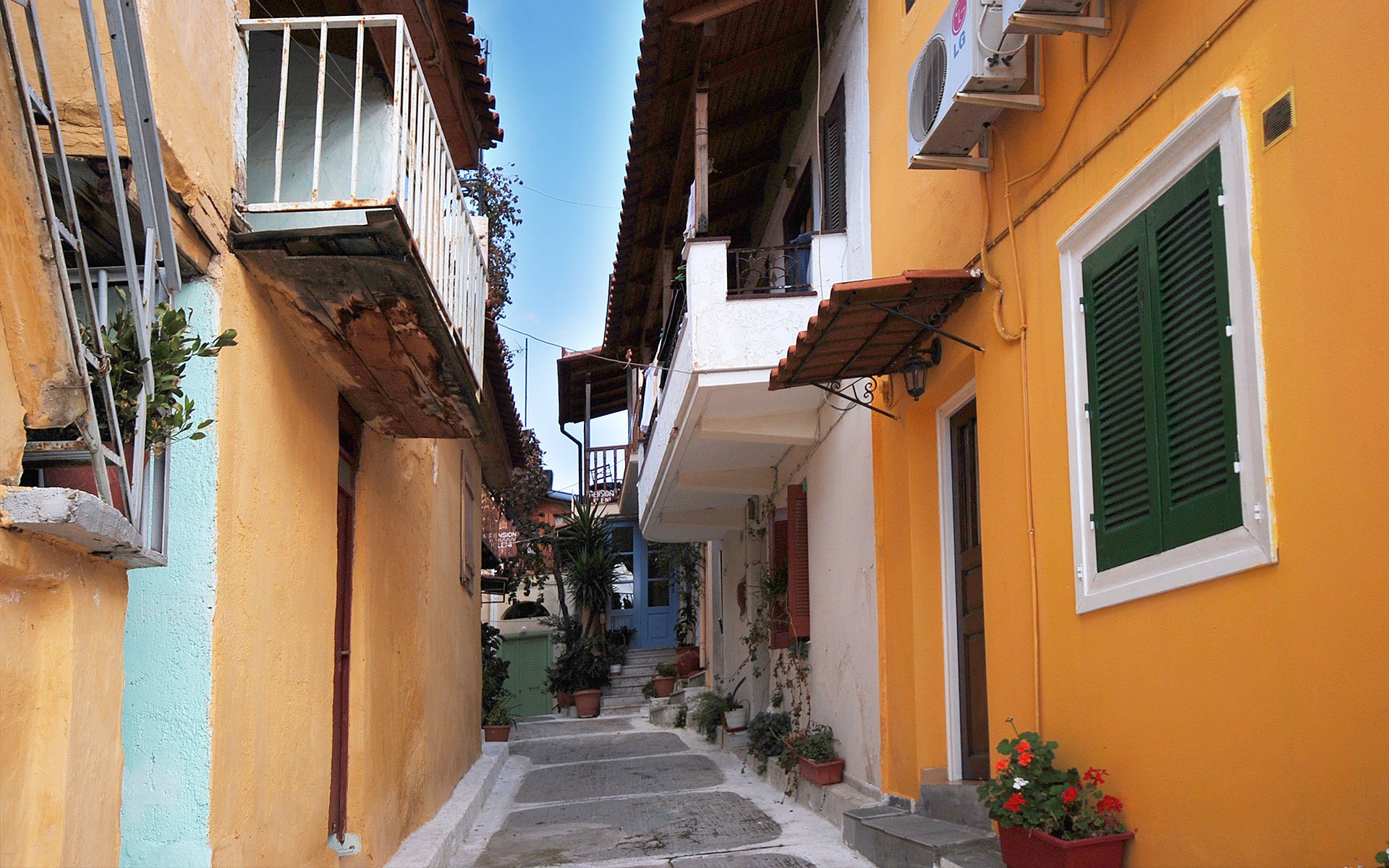
From Syntagma Square we will go up the Ioannis Zygomalas Street, to wander through one of the most beautiful neighborhoods of the old city, which is also the least crowded.
“Psaromachalas” was the Byzantine quarter of the fishermen, hence its name, while during the Second Ottoman occupation it was the only neighborhood where Greeks lived within the walls of the old city. The chapel of “Psaromachalas”, called Saint Sophia, dates back to the 11th century.
The Armansperg Residence
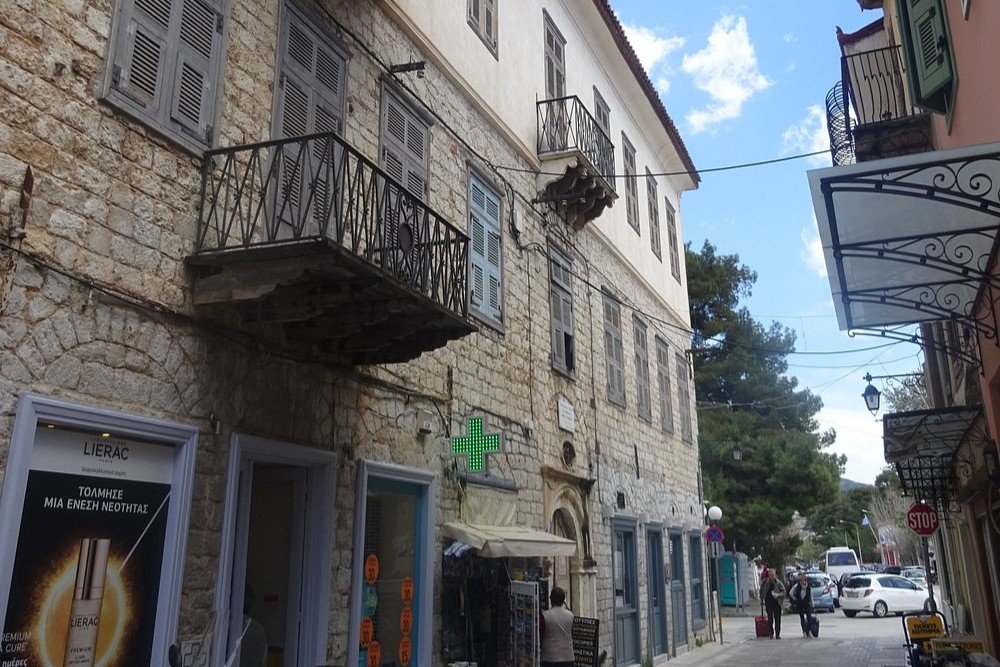
From Psaromachalas we will walk down again at Zygomalas Street to follow the Staikopoulou Street main pedestrian area, among colorful boutiques, small galleries, small taverns and cafés that spread their tables under the first rays of sunshine.
Our stroll will take us to the impressive Armansperg Residence, one of the most important mansions of Ottoman era and the house of the viceroy of Greece and Duke of Armansperg, Joseph Louis.
The route and the stops on the map : google.com/maps
Route #2: Walking along the sea, or the Arvanitia Tour
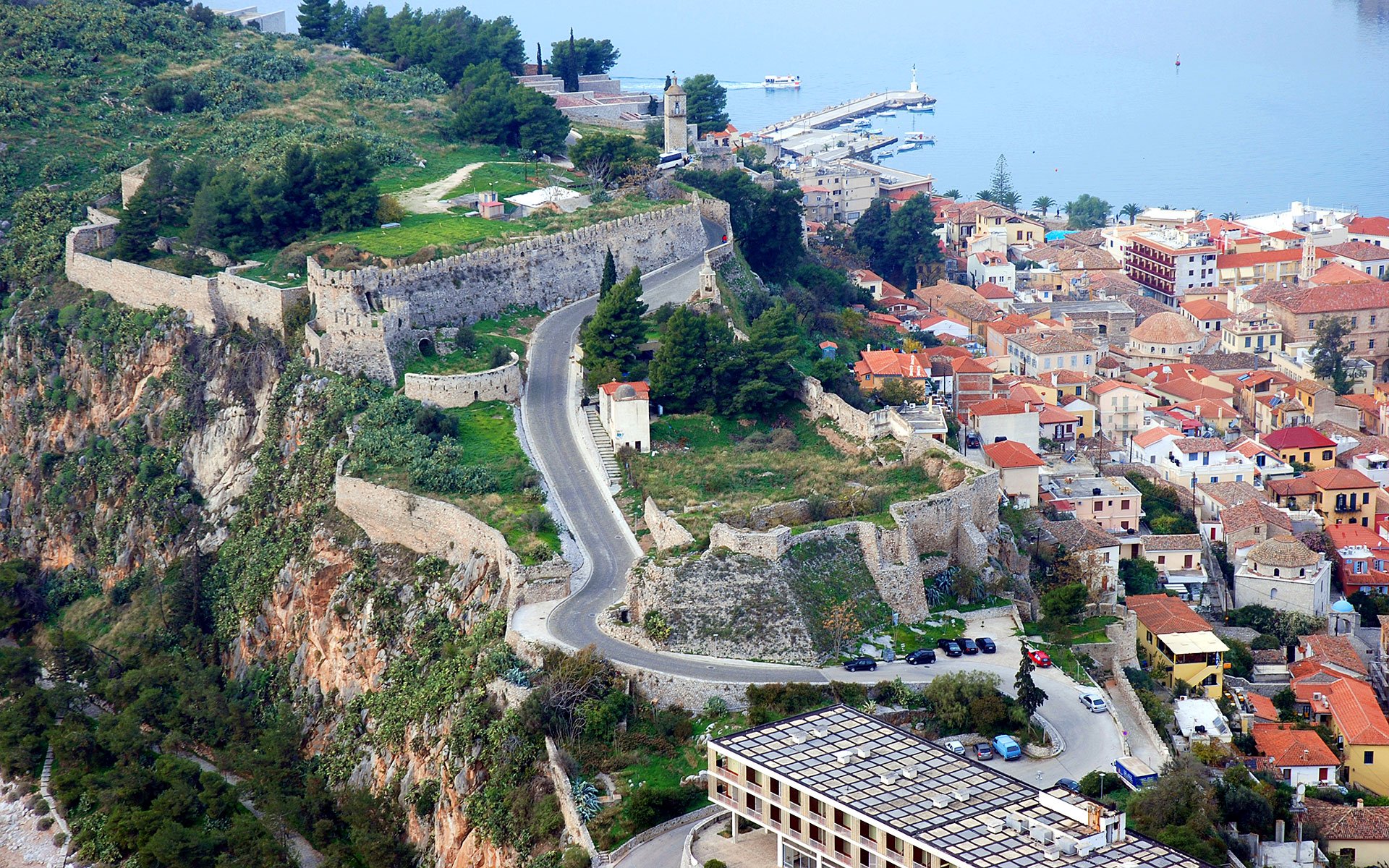
The ultimate sea route of Nafplio, the famous Arvanitia Tour moves constantly along the sea, to end up at the beach of Arvanitia, a favorite of locals and visitors, and from there - if you’re willing enough - to the stairs that will take you up to Palamidi Fortress (which, contrary to the widespread myth, it doesn’t have 999 steps, but 857. We hope we’re not spoiling the fun for you).
We start from the port of Nafplio
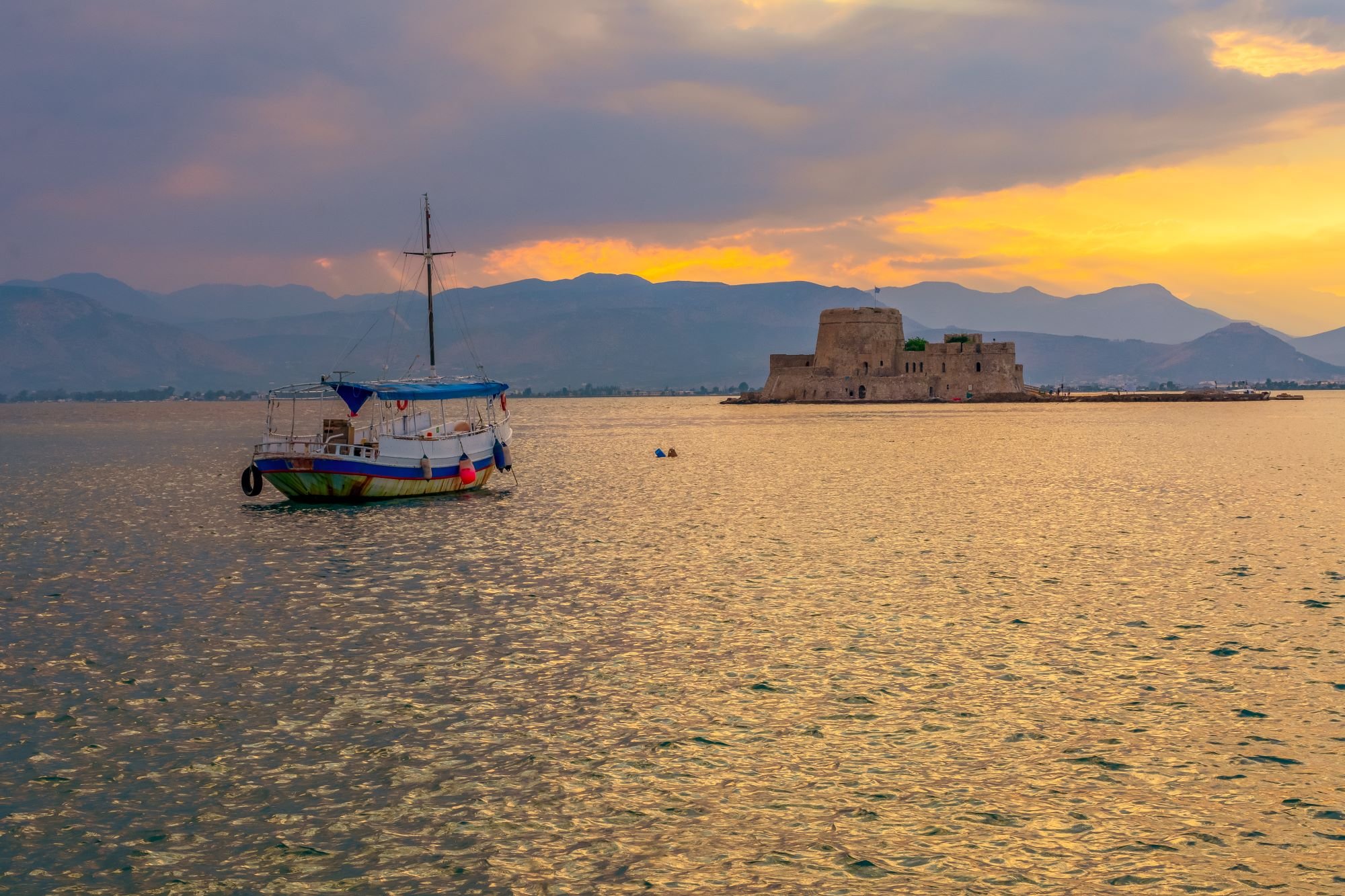
Opposite the Philellinon Square, with its amazing view of Palamidi which is illuminated at night and it seems like hanging from the sky, the small port of Nafplio is the point from which the boats depart for the Bourtzi water fortress.
The smallest of the three castles of Nafplio was built by the Venetians in 1473, and was called Castello dello Soglio, meaning Castle of the Throne.
Especially around sunset, when it is engulfed by a pink sky that contrasts perfectly with its yellowish lighting, its image is magical. Bourtzi is open to visitors, after many years of being closed, if you want to start this sea walk with a boat.
The Lighthouse of Nafplio
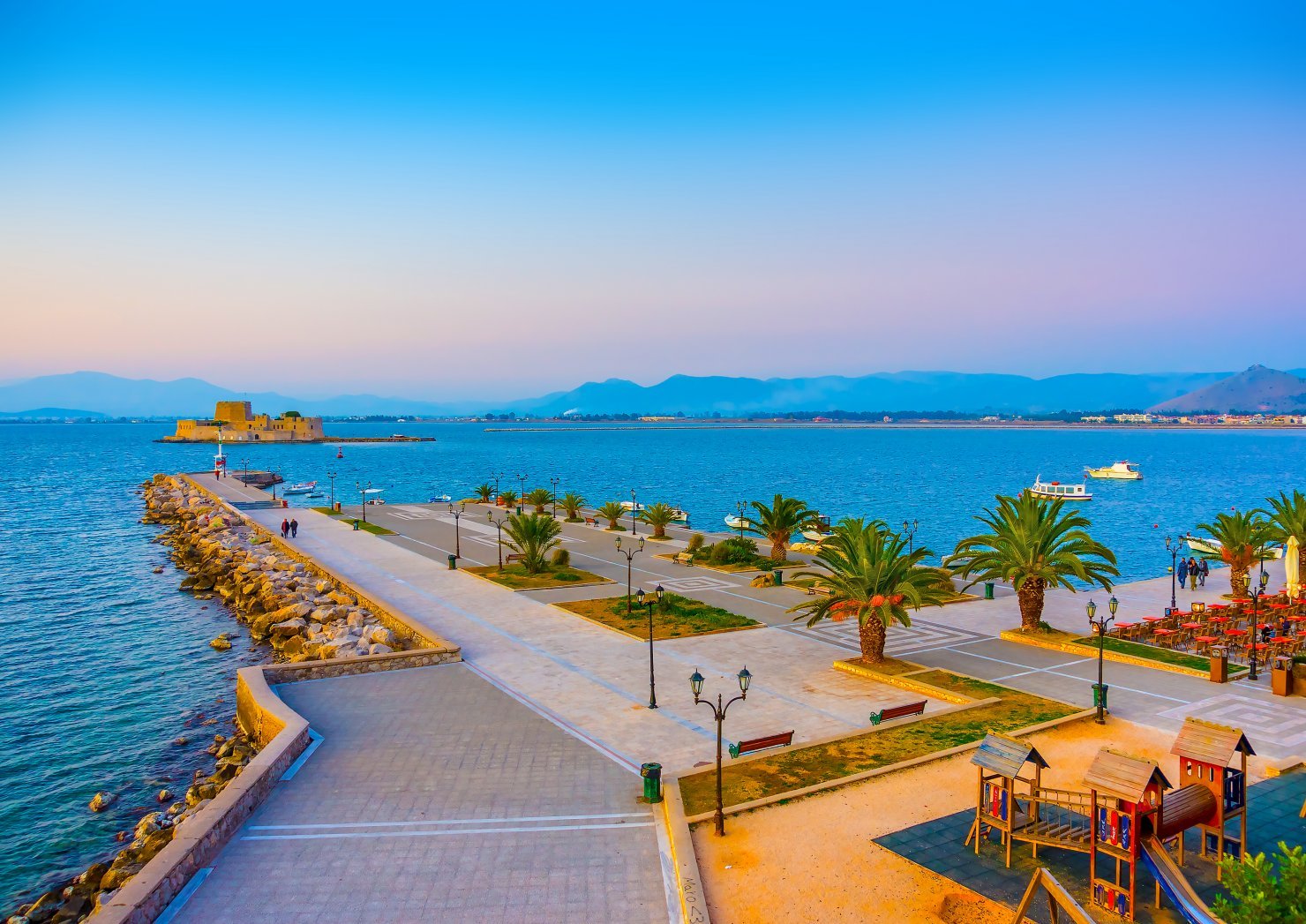
We continue along the coast on Bouboulinas Street, until we reach the Lighthouse of Nafplio. We’ll be so close to Bourtzi that it would seem like you can reach out and grab it.
The terraces around the six and a half meter high lighthouse are one of the most romantic spots in Nafplio to watch the sunset, and if you take the walk in the morning you'll see people fishing around it.
Akronafplia
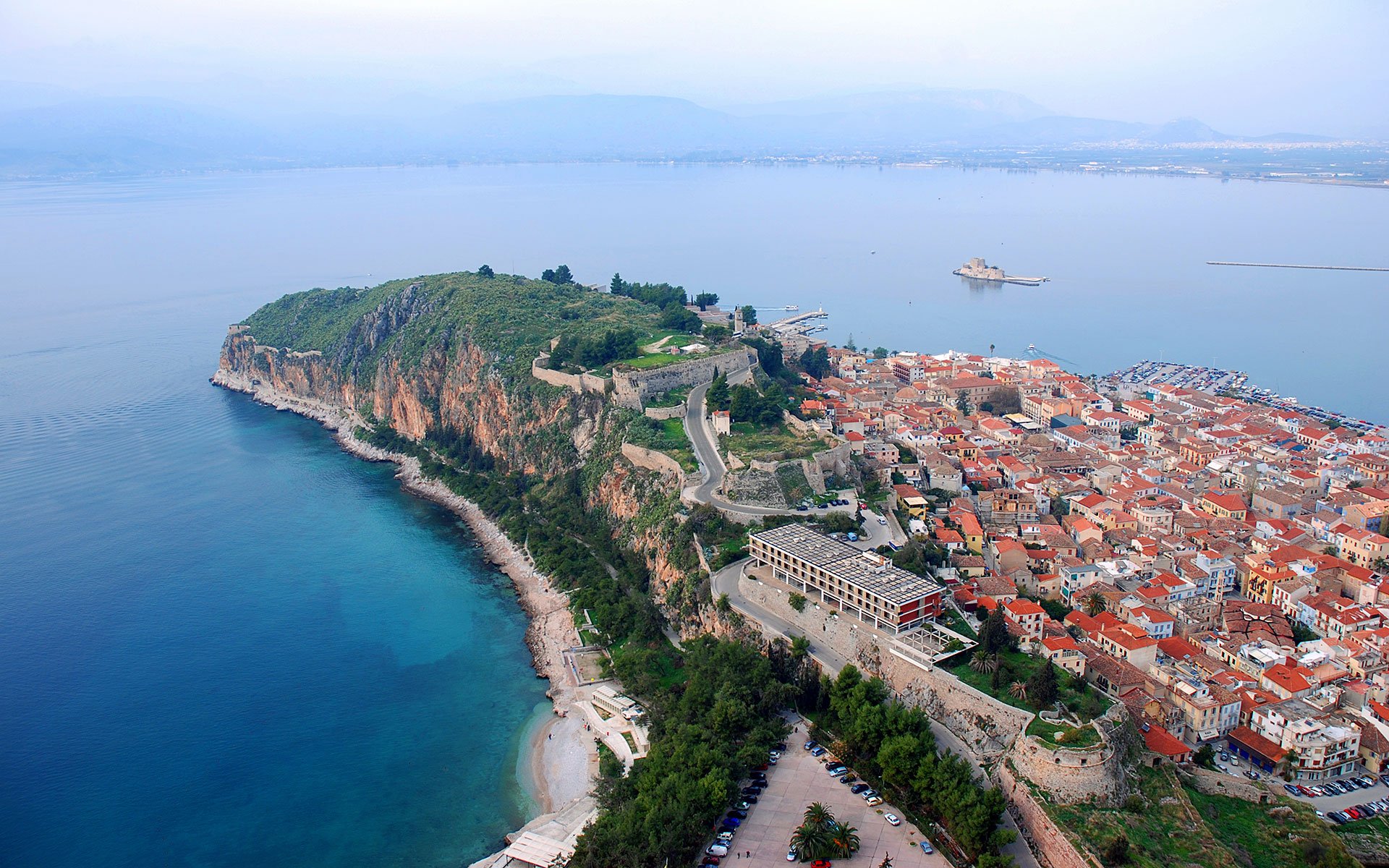
Continuing along the coast after the Lighthouse, on the road that is now called Arvanitia, you will see opposite the Nafplio Yacht Club, the steps leading up to the castle of Akronafplia.
The oldest of the city's castles, with its vertiginous walls reaching up to 85 meters high and dating, the oldest of them from the 3rd century BC, Akronafplia is a puzzle of different periods and histories : The towers and cannons you see today are later additions, of the Franks and Ottomans. Needless to say, the view from Akronafplia towards the sea and the sunset from up there are spectacular.
The Panagia of Spilia (Santa Maria della Grotta)
A small detour worth making a little further on the Arvanitia Tour is the path of Panagitsa that will bring you to the homonymous chapel, also called Panagia of Spilia (Virgin Mary of the cave), Santa Maria Grotta as the Venetians called it.
Panagitsa chapel as it is today of course was built in 1850, on the cliffs of Akronafplia, and we would add that it also enjoys an amazing view of the sea. We hope we’re not repeating ourselves and becoming picturesque.
The Lighthouse of Arvanitia
To the delight of the romantic souls among us, there is more than one lighthouse in Nafplio. There is a second, smaller one that we will meet along the way : The Lighthouse of Arvanitia, on the cobblestone road that embraces the sea like a jewel and passes through an absolutely picturesque carved rock.
If you don't stop for photos here with the endless blue sky and sea as a background, we don't know where you'll find a better spot.
The beach of Arvanitia
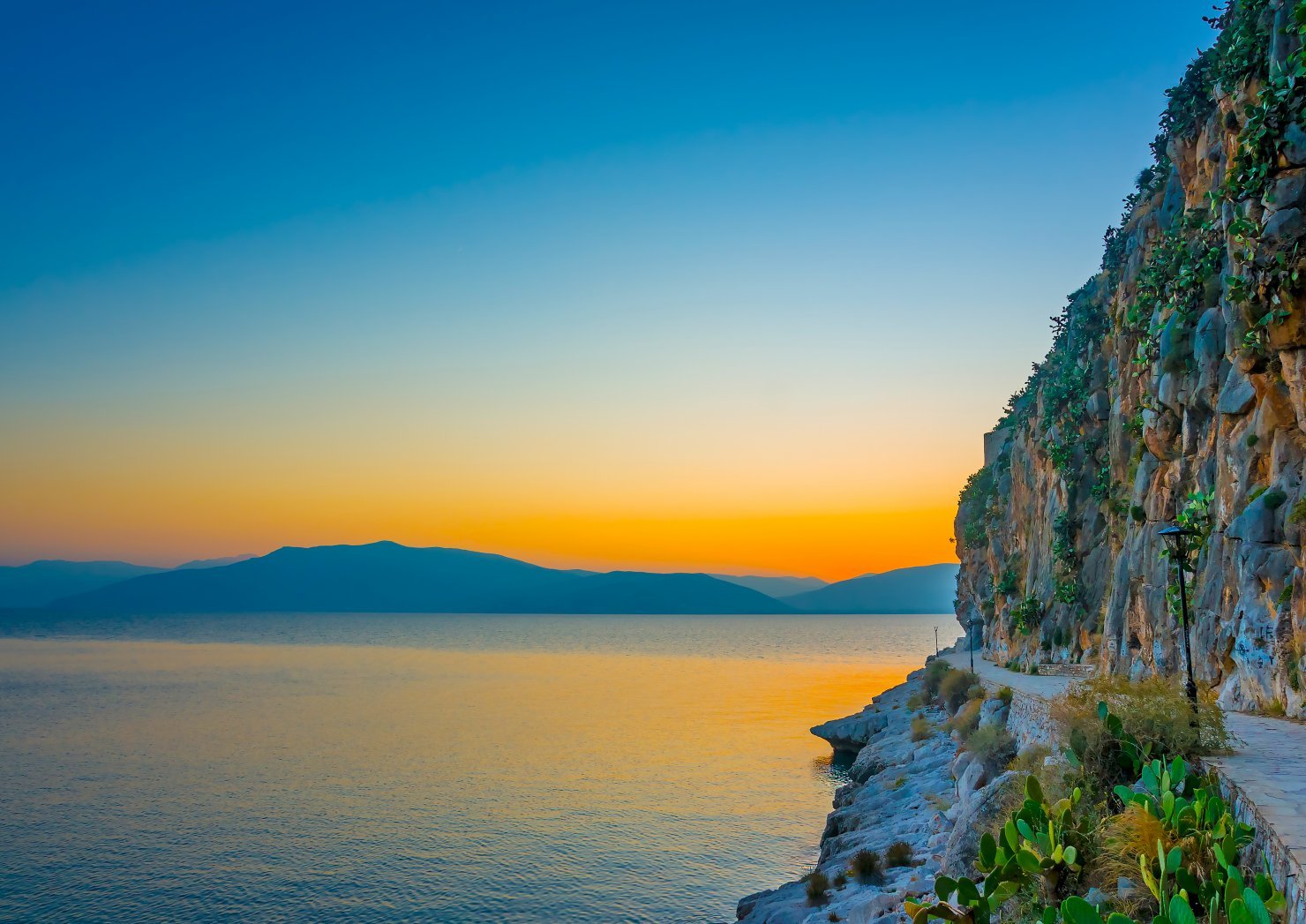
The route will bring you, after two enjoyable kilometers by the sea, to the pebbled beach of Arvanitia. We hope that if you do it in summer, you will brought your swimsuit, because there are not many places in Greece where you have the opportunity to swim while gazing at the walls of a castle (Palamidi, in this case).
Speaking of Palamidi, if you still have some strength left, from the beach of Arvanitia you can climb up Polizoidou Street, which will bring you to its steps: 857 as mentioned before, but if you make it, you'll be rewarded with the best well-preserved Venetian castle we have in Greece right now, and the spectacular view of Nafplio from its ramparts.
If you are not into sports, you can of course approach Palamidi from the other side of the hill too- the paved road will bring you comfortably with your car to the entrance of the castle.
The entire route with its stops on the map, here : google.com/maps
Route #3: In the footsteps of tradition, or the neighborhood of Pronia District
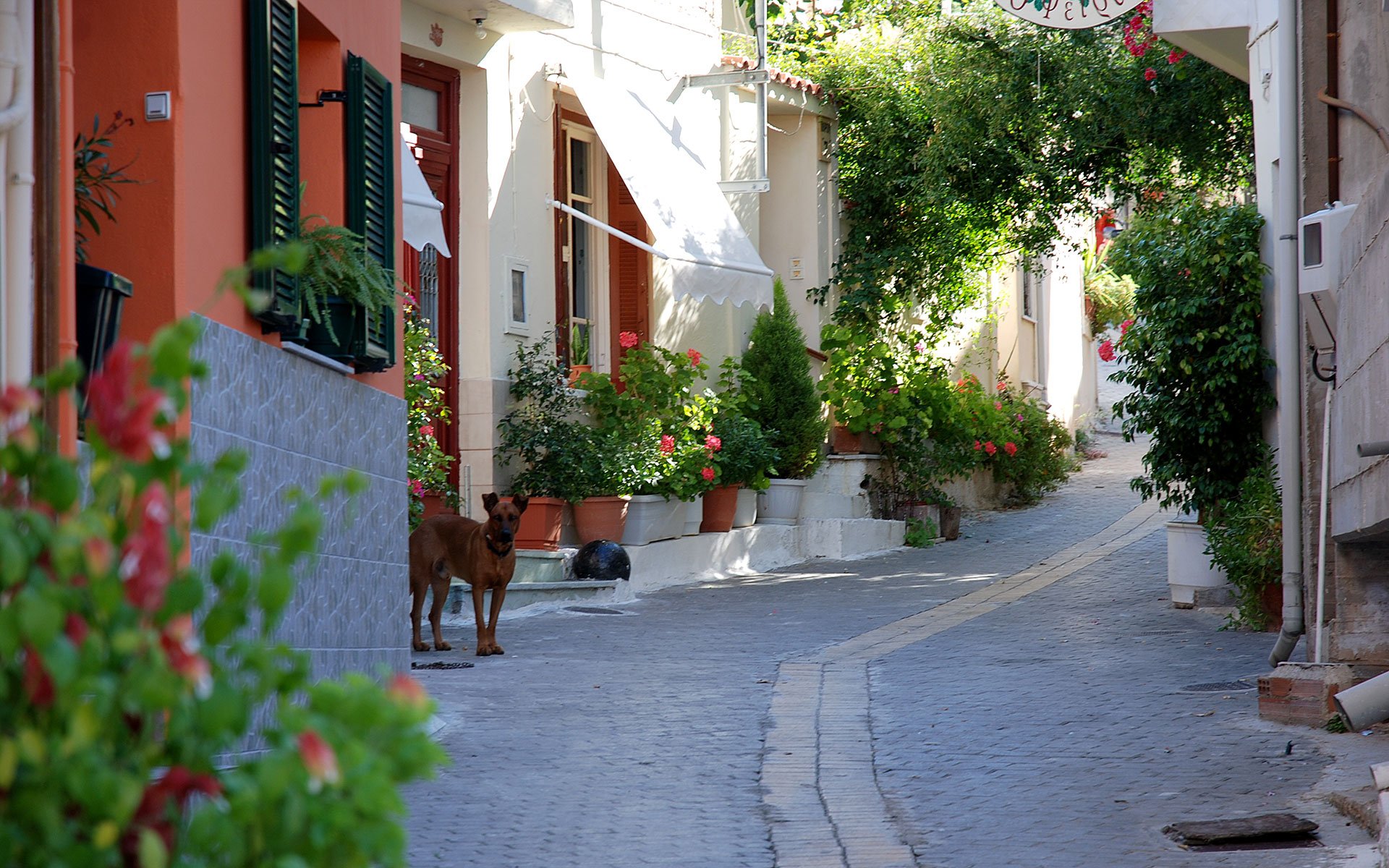
A neighborhood towards which tourists rarely stray, as we promised earlier: Built amphitheatrically on the northeastern slope of the hill of Palamidi, the historic district of Pronia was the first organized refugee settlement in modern Greece.
Initiated by Ioannis Kapodistrias, who was called upon to house the refugees who flocked (mainly from Crete but also from other parts of Greece) in the 1820s to Nafplio, Pronia was designed by the engineer Stamatis Voulgaris, and today it retains much of its 19th century image, with its low houses, flowered courtyards, traditional taverns and historic churches.
We start with the Bavarian Lion
Carved into the rock above Michael Iatrou Street, with a small park spreading out under its feet, the impressive sleeping lion is the work of the German sculptor Christian Ziegel.
It was commissioned by King Louis, Otto's dad, in memory of the Bavarian soldiers who died in Nafplio in 1833 from a typhus epidemic.
The locals, of course, say that what killed them was not the typhus, but the many cucumbers they ate, hence the other, unofficial and somewhat disrespectful name of the monument: “Aggouroon”, which means cucumber in Greek.
The Church of All Saints
The historic chapel of Pronia, built on the natural rock of a hill, dates from the Second Venetian rule, and was for a short period of time, from 1715 to 1780, the only church of Nafplio that was functioning normally.
In its precinct was the old cemetery of the city, where among others the heroes of Greek Revolution, Paleon Patron Germanos, Nikitaras and Staikos Staikopoulos, were buried. On the floor of the small church you will still see today pieces of their tombstones.
Evangelistria Church
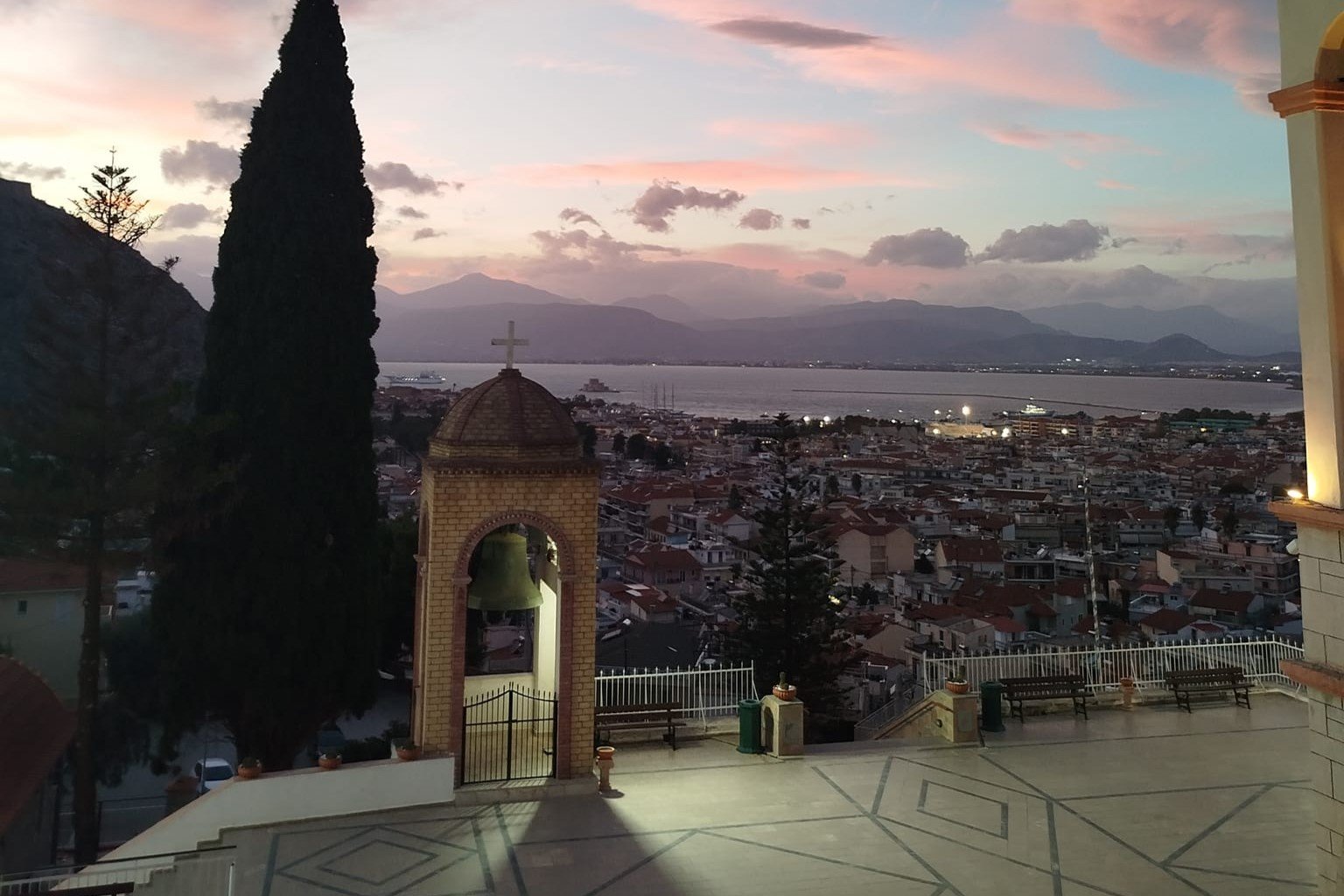
At the highest point of Pronia (we hope you can bear climbing hills) the church of Evangelistria is a serious candidate for the title of the best view in all of Nafplio -when the atmosphere is clear, you can see as far as Larissa, the castle of Argos.
The history of the church, which took its present form in 1975, is lost in the depths of the centuries. However, we know with certainty that it existed in the period of the Second Venetian occupation, which begins at the end of the 17th century. In its chapel, St. Fanurios, you will also see a small museum, where historical ecclesiastical objects are kept.
The Holy Trinity Church
Zigzagging through picturesque streets that pass by low houses with flowering courtyards, we reach the central church of Pronia, the Holy Trinity, whose construction began during the days of Ioannis Kapodistrias, and was completed in 1838, after many postponements, small financial scandals and pressure from the residents.
This was the origin story of one well-known to old Nafplians saying that goes “Pronia elects the mayor”.
The Museum of Childhood “Station”
The child that we all hide inside us will find its heaven in the Museum of Childhood, with its collections including toys of the 19th and 20th century and charming objects from the collection of the Basil Papantoniou Foundation about childhood.
You'll find it inside the old railway station, and if you ask us we're struggling to think of a better place to end our nostalgic walk to Pronia District.
The entire route with its stops on the map here : google.com/maps
Half the charm of Nafplio is its historic neoclassical buildings : Painted in pastel colors, spectacularly lit up as darkness falls, adorned with traditional antefixes and nostalgic balconies resting on elaborate corbels, with their arched entrances looking like gates for the passage to past centuries. Staying in one of them, instead of just gazing at them from the outside, is the epitome of the romance that is inherent in every trip to Nafplio.
Such a dream of a romantic night promises to make the Ippoliti Hotel, in the heart of Nafplio, just a few steps away from Syntagma Square and the picturesque harbor, a reality.
At Hotel Ippoliti you will experience Nafplio of your dreams


Destinations

